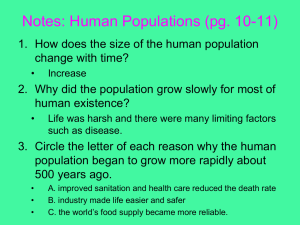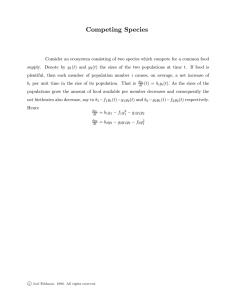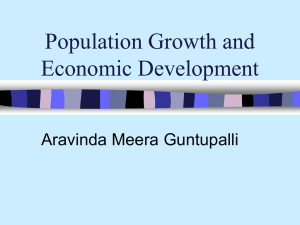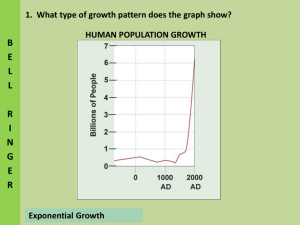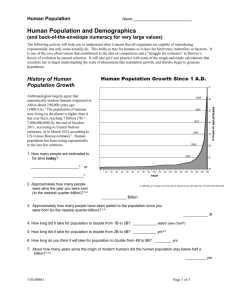5.3 DR
advertisement
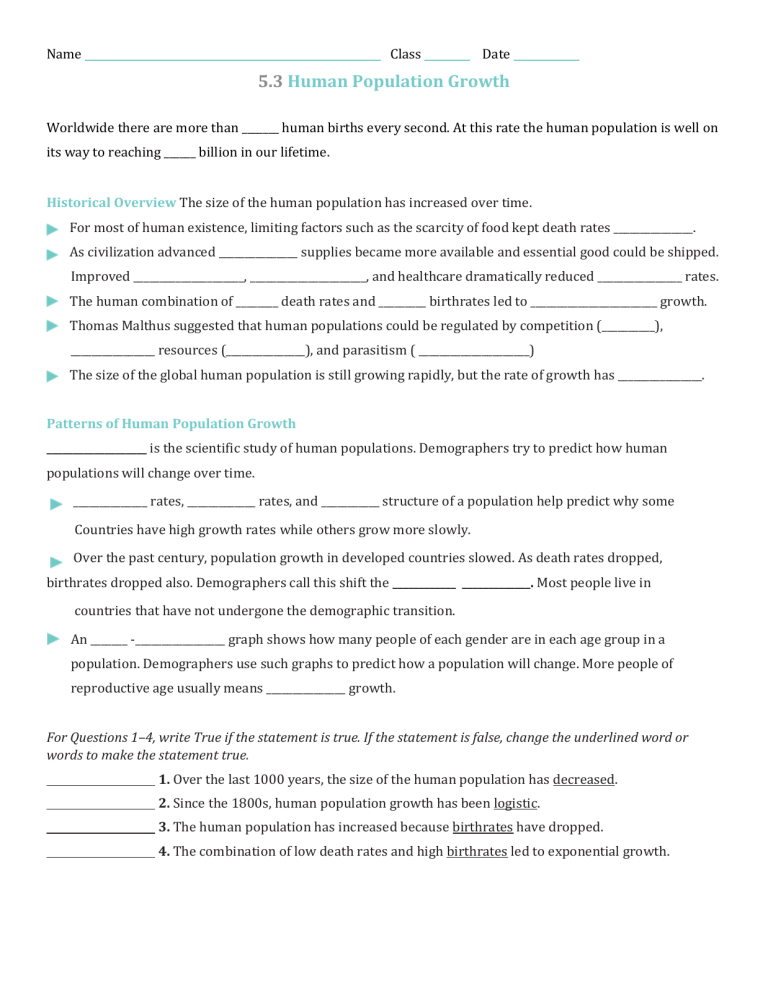
Name Class Date 5.3 Human Population Growth Worldwide there are more than _______ human births every second. At this rate the human population is well on its way to reaching ______ billion in our lifetime. Historical Overview The size of the human population has increased over time. For most of human existence, limiting factors such as the scarcity of food kept death rates _______________. As civilization advanced _______________ supplies became more available and essential good could be shipped. Improved _____________________, ______________________, and healthcare dramatically reduced ________________ rates. The human combination of ________ death rates and _________ birthrates led to ________________________ growth. Thomas Malthus suggested that human populations could be regulated by competition (__________), ________________ resources (_______________), and parasitism ( _____________________) The size of the global human population is still growing rapidly, but the rate of growth has ________________. Patterns of Human Population Growth ___________________ is the scientific study of human populations. Demographers try to predict how human populations will change over time. ______________ rates, _____________ rates, and ___________ structure of a population help predict why some Countries have high growth rates while others grow more slowly. Over the past century, population growth in developed countries slowed. As death rates dropped, birthrates dropped also. Demographers call this shift the ____________ _____________. Most people live in countries that have not undergone the demographic transition. An _______ -_________________ graph shows how many people of each gender are in each age group in a population. Demographers use such graphs to predict how a population will change. More people of reproductive age usually means _______________ growth. For Questions 1–4, write True if the statement is true. If the statement is false, change the underlined word or words to make the statement true. 1. Over the last 1000 years, the size of the human population has decreased. 2. Since the 1800s, human population growth has been logistic. 3. The human population has increased because birthrates have dropped. 4. The combination of low death rates and high birthrates led to exponential growth. 5. Complete the diagram below by adding the information for stages II and III of the demographic transition. Draw bars to represent the birthrate and the death rate and describe the stages on the lines provided. Use these age structure diagrams to answer Questions 6–9. 6. Which country has gone through the demographic transition? How do you know? 7. Which country do you predict will experience a slow and steady growth rate in the near future? Why? 8. Which country is most likely to grow exponentially in the near future? Why? 9. Suggest three factors that might slow population growth in Rwanda.
